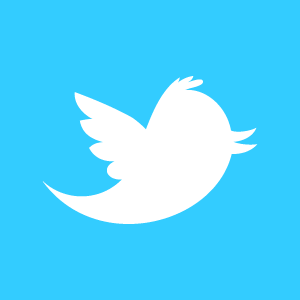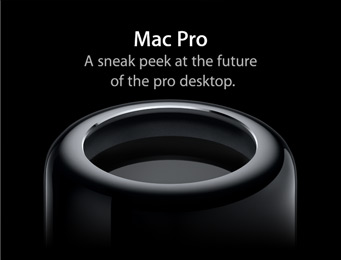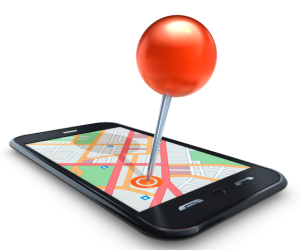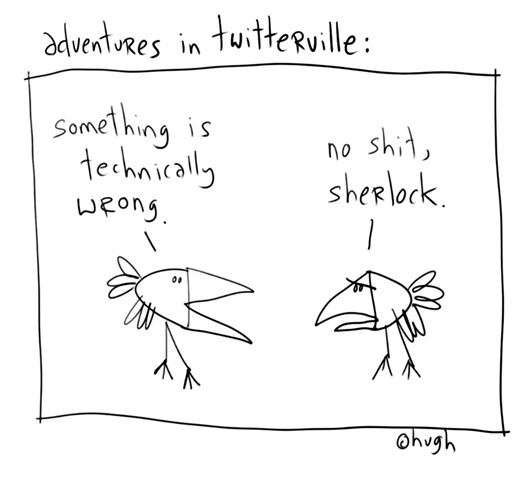Twitter goes public, right? And as of today we know the terms. Those are straight forward and no big surprise: large user base, high growth, huge losses but rising revenues. Alas, on the revenue side, there is probably consent (or at least strong voices) that they need to improve. So just coincidentally, Twitter also announced a few days ago that it struck a deal with CBS about video ads in tweets this autumn (erm, they called it fall, actually). This triggered a discussion on Facebook (yes, my friend Rob was at it again) where people argued if this was a Trojan horse by Twitter to get to those coveted second-screen ad dollars or if it was the natural extension of a movement towards “personal brands” or if it might ring in the death of Twitter as an empowering platform.
What struck me though was this: everyone seems to agree those ads are pesky things that are in your way. No one likes them (I really do not know a single person that has said even once “wow, just my kind of ad, how lovely”). An annoyance. Much worse than billboards or those banner ads we have by now all learned to ignore. Because you have to scroll past them. They can only be compared to the equally annoying video ads on YouTube you can “skip” after X seconds (and, yes, YouTube, we all want to skip them). Without wanting to diminish the significance of Madison Avenue then, I think we can – so far – deduce that the only reason why Twitter makes any money on this is that they can monetize the friction – it’s so annoying and in your way that it will catch some people out. I would love to see measures as to its effectiveness. I would posit that there are a gazillion ways to do it better.
Twitter & Wilshire Boulevard
This got me thinking: they should really be able to do it a lot better, right? I mean, 200m active users, 1bn tweets in every 48-hour period. There’s some money in there, surely. But let’s have a look of what Twitter is. Twitter connects people with each other. It creates a network. A social network. Right? Well, how about this: the road grid of LA connects people with each other. It creates a network. Would you ever call it a social network? Hell, no! And why not? Well, because it’s infrastructure, stupid! Now, ad dollars are being spent plentiful on the streets of LA but no one would ever dream of having them pay for the roads. And that might just be the flaw in all this!
Monetizing Infrastructure
Roads, you see, tend to be “monetized” (financed used to be the word) in one of two ways: tolls or taxes. There are some interesting toll concepts though: In London, the congestion charge (a cool £10 [=$15] charge per day) is being levied whenever you want to drive into the more congested parts of the centre. Makes money! In Germany, only lorries have to pay: commercial use of public infrastructure carries the levy. The Swiss and the Austrians simply run a subscription service. And then you have your distance-driven ones (hello, Italy, France, M6 Toll, etc. etc.). The other way is to treat infrastructure as a public cost to provide an essential service. And because that is a social cost (no, my American friends, no need to run away; this is actually a fairly universally accepted concept), namely one by society, it should be spread across society. And the customarily applied technique to do that is taxes.
Why do we think that roads on the Interwebs can function differently? Mind you, you could probably plaster billboards all over the place and make sure that each neighbouring property onto which those billboards are mounted pays a “viewing charge” (the value of the billboard on that wall has nothing to do with the wall but all to do with Wilshire Blvd. passing by). But – without having run the maths – I am fairly sure that that would not be able to finance the whole thing. The reason why many people think it does work is that it only costs a fraction to build a road grid on the web than it does in real life (all of Twitter’s employees would arguably still be wrestling with that one bypass down in Santa Monica). And that’s really cool! Because it helped many a great technology to come into its own and bring a ton of good to mankind.
Alas, it doesn’t tackle the systemic flaw in the thinking: it is friggin’ infrastructure and that is not really the best way to finance it: annoyance by design? Come on, we should really be doing better. Or can we?
The Value of Networks
Metcalfe’s Law (which I often [ab]use in my talks) states that the value of a telecommunications network is proportionate to the square of its users (he stipulated it to demonstrate the value of ethernet ports). But that doesn’t mean that monetary value of X is Y. Because values can be non-monetary and – sadly (if you’re in the business) – non-monetizable. He would have been more accurate had he replaced the word “value” with “usefulness”.
However, if we home into this then, we might be getting closer to the solution: what it tells us is that Twitter (and every other “social” network) should be aiming to harvest the value it truly brings, namely that of the connections it facilitates. Regular users would most probably scoff at that and move on. However, commercial ones maybe not so much. It would be – crudely comparing this – taking the German toll system to social networks: if you use my infrastructure to transport commercial goods across my said infrastructure, you should pay. Because, you see, you are using my asset to maximize the value of your asset. And because I contribute to this value maximization, I should get a cut. Logical, no?
The value of the commercial use of digital infrastructure is, of course, humongous! On its most basic level, we pay for access (that’s your monthly broadband fees). Twitter (and everyone else in the wider realm) provides a value-add on top of that most basic level, and that is (more or less) meaningful connections. You could liken it to road signs, if you want. And with a network the size of Twitter’s, you’d be lost without them. So there is undoubtedly a lot of value there. But would a regular driver really want to pay for the use of a roadsign? Well, maybe not (even though it would be prudent as it would get her more quickly from A to B). Would a commercial delivery pay for their use? Probably: time is money, dude! And would, say, an ice cream van pay extra if said roadsign could direct him to the road full of ice cream-craving kids who have just had their pocket money? You bet!
This is, of course, what clever algorithms do. Google is pretty nifty with this, I hear. At least when it comes to AdWords and such. The others? Not so much though. The number of completely random, off-target ads and promoted tweets (or, on Facebook, “suggested posts) I have been seeing is mind-boggling. What are they thinking? (no, don’t answer).
To get this right might solve some monetization headaches. It would also do a few more good things: it would leave us regular users in peace! But, even more importantly, it would actually monetize where value is.
Thoughts?

 Over everything else that’s been going on today (my resignation from BlackBerry only putting one of the smaller cats amongst my own pidgeons), I nearly missed a rather remarkable deal:
Over everything else that’s been going on today (my resignation from BlackBerry only putting one of the smaller cats amongst my own pidgeons), I nearly missed a rather remarkable deal:  Now, today, Apple showed us that it understands this thing (unless it was incidental but I doubt that): the products it presented at its annual WWDC weren’t so mindblowing if you’re not an out-and-out fangirl (OK, maybe with the exception of the new
Now, today, Apple showed us that it understands this thing (unless it was incidental but I doubt that): the products it presented at its annual WWDC weren’t so mindblowing if you’re not an out-and-out fangirl (OK, maybe with the exception of the new  So, what if you could effectively combine mobile and local? As in asking someone if there is a free washing machine in the launderette down the road (before you haul your laundry down there), if Lady Gaga is on stage already (or if it is still that pesky opener), that sort of thing. Sounds cool? Yeah. Have we heard about this before? Hell yeah. Do you know of anyone who has solved this successfully? Erm…
So, what if you could effectively combine mobile and local? As in asking someone if there is a free washing machine in the launderette down the road (before you haul your laundry down there), if Lady Gaga is on stage already (or if it is still that pesky opener), that sort of thing. Sounds cool? Yeah. Have we heard about this before? Hell yeah. Do you know of anyone who has solved this successfully? Erm…
 It is this time of the year where people start looking forward (and back) and come up with clever analyses of things we have always known and those that we haven’t. And because Europe has always (?) been the thoughtful and fashionably skeptic part of the world, it is that one of the leading newspapers, the Guardian,
It is this time of the year where people start looking forward (and back) and come up with clever analyses of things we have always known and those that we haven’t. And because Europe has always (?) been the thoughtful and fashionably skeptic part of the world, it is that one of the leading newspapers, the Guardian,  Social media (Twitter included) is nothing in itself, it merely defines a group of tools. Therefore, it is not the emperor’s new clothes, it is – if anything – the emperor’s new herald: if the emperor has nothing new, interesting, noteworthy to tell, it will remain as dull and meaningless as before but social tools actually allow you to filter, to focus, to spread noteworthy, sensible and truly good stuff to a group of people that is much larger than you could have reached before at a cost that is (per capita and in toto) much lower than before. And that means it is one cool tool!
Social media (Twitter included) is nothing in itself, it merely defines a group of tools. Therefore, it is not the emperor’s new clothes, it is – if anything – the emperor’s new herald: if the emperor has nothing new, interesting, noteworthy to tell, it will remain as dull and meaningless as before but social tools actually allow you to filter, to focus, to spread noteworthy, sensible and truly good stuff to a group of people that is much larger than you could have reached before at a cost that is (per capita and in toto) much lower than before. And that means it is one cool tool! As with every tool (say, a hammer), social tools are more useful, the easier and intuitive they are to use. If it is self-explanatory on how to extract something positive (e.g. to get that bloody nail into that bloody board), the better (and if you can do it without walking away with a bloody thumb, even better). At the moment, many people walk away from Twitter because of a bloody thumb. But would you dismiss a hammer only because you hit yourself? Probably not. Unless you find a better hammer of course…
As with every tool (say, a hammer), social tools are more useful, the easier and intuitive they are to use. If it is self-explanatory on how to extract something positive (e.g. to get that bloody nail into that bloody board), the better (and if you can do it without walking away with a bloody thumb, even better). At the moment, many people walk away from Twitter because of a bloody thumb. But would you dismiss a hammer only because you hit yourself? Probably not. Unless you find a better hammer of course…